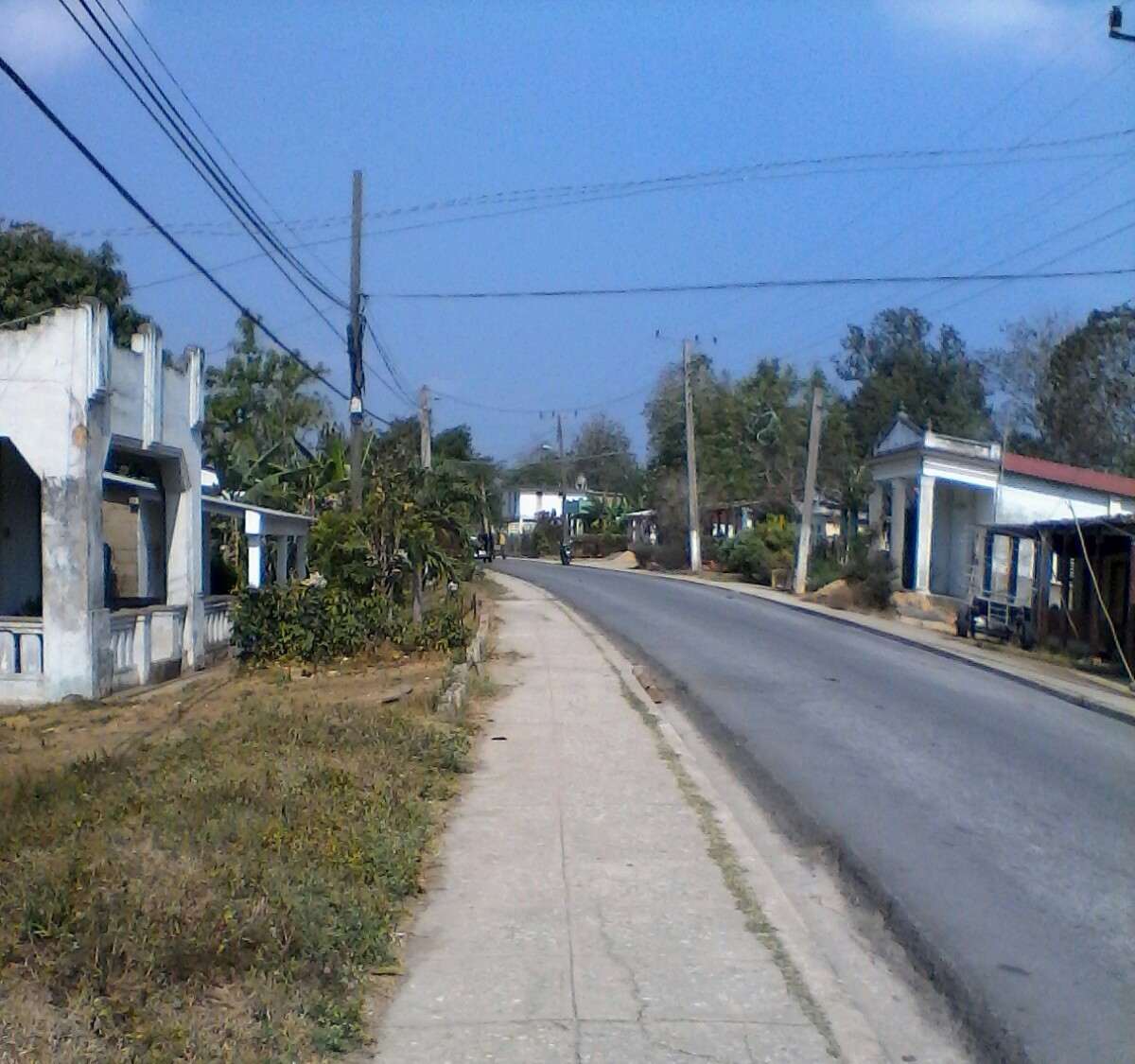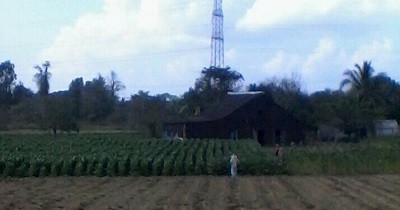Puerta de Golpe – a Dark Town
By Pedro Pablo Morejon

HAVANA TIMES – I live in Puerta de Golpe, Pinar del Rio, as you will have read in my other articles. The town is located 15 km to the east of the provincial capital. It is a kilometer and a half long, one narrow street with very few alleyways and banks that join the main street. I wasn’t raised here and I’ve never felt like I belonged here. It has accompanied me rather, so to speak.
I was born in an idyllic and beautiful place called Rio Hondo, officially known as Barrio Jagua, at km 101 on the Central Highway. Although, to tell you the truth, it’s a been a long time since I’ve felt like I belong anywhere. I have this strange feeling of not belonging to a certain place.
But getting back to Puerta de Golpe, it’s more the place where I go to spend the night. My life, my dreams, everything… takes place in the city of Pinar del Rio. Now, with this crazy Coronavirus situation, I find myself forced to spend more time in this small town, which continues to haunt me in spite of everything. I have been spending the other part of my time in Entronque de San Diego for some time now, which reminds me of my childhood.
It has very peculiar origins. It just so happens that at the turn of the 20th century, there was a rustic gate tied to a rope with a heavy object at the old La Mariquilla ranch, which forced it to be shut. When somebody went inside, it would make a loud banging noise when closing, and that’s where the town’s name came from. There was a small tavern in the small village and when day-workers came to eat lunch, they would say:
– I’m going to Puerta de Golpe.
And the name stuck.
It has approximately 7900 inhabitants and is a farming region, mostly tobacco-farming. To give you an idea, Consolacion del Sur (the municipality it belongs to) is the largest in terms of production volume in the entire province and country, and Puerta de Golpe is one of the most productive areas for tobacco farming, along with Pilotos. So, we’re talking about one of the areas that cultivates the most tobacco in the entire world.
 It also has metallurgical workshops in the center of town, known as La Fundicion, with all of the environmental damage it causes. Spending the afternoon in front of this industry is quite a challenge for your lungs and nose.
It also has metallurgical workshops in the center of town, known as La Fundicion, with all of the environmental damage it causes. Spending the afternoon in front of this industry is quite a challenge for your lungs and nose.
Luckily (or unfortunately), smelting and the manufacture of farming tools is frequently shut down because of a constant shortage of raw materials. Workers are then often sent to do farm work.
There aren’t many sources of employment here, mainly at La Fundicion, or working as tobacco preparers or farmers growing tobacco and some root vegetables.
Like Mendoza, there isn’t a lot of life here either. Just like pretty much any small town in the country’s interior, it’s really hard to satisfy all of your basic needs, which is even harder nowadays with the pandemic.
There is only one cultural space but it is renowned nationwide: El patio de Pelegrin, a community project founded and run by the famous painter Mario Pelegrin. Painting, sewing and Cuban crochet workshops are held there. Dancing parties are held in the night. It’s basically the only interesting cultural spot in this town, but like every good thing in Cuba, it has long low points.
However, it’s not all bad. It’s a land of great writers such as Heberto Padilla, who was born here and is one of the best Cuban poets to ever have lived and was unfortunately repressed during that grim period known as the Five Gray Years (1971-1976). Rodolfo Duarte, the 2013 Carpentier prize winner for best fiction and winner of other important international literary awards, is also from here.
And it’s an oasis in terms of water, which is the second most important thing for our bodies after oxygen.
However, in the general scheme of things, Puerta de Golpe continues to be in debt with its residents, maybe this is where a vulgar quatrain comes from, many years ago, which sums this up and is always in the hit parade on Puerta de Golpe’s underground scene:
Puerta de Golpe – a dark town
with its long and narrow street,
if the world had a butt cheek
Puerta de Golpe would be the anus.






I know this town very well,lived in Pinar del Rio for 10 years and was a very good friend of Mario’s brother Jose who was a singer.Remember when their house burnt down.Their father loved westerns which I used to bring CDs back from Cancun.Mother was also a very kind woman as was their sister
Was always terrified of the croc/alligator in back terrace
I remember great afternoons of dominoes and bucannero
But it is true,there really was nothing there.
Dan, your comment about a black female Cuban being better educated than most of ones fellow countryman, applies also to my wife. When out of Cuba and able to access the full Internet (remember that it was only first permitted in a very limited form in Cuba in 2014 to a privileged few) she spends much of her time studying academic papers and research work that she cannot access when at home.
The communist oppression cannot stifle intelligent minds.
What a coincidence. I spent time in Puerta de Golpe in 1993 after harvesting tobacco in Consolacion del Sur with the Venceremos Brigade. I was friends with a black, female agricultural engineer. She lived with her family in a bohio, but she was better educated than the vast majority of my countymen.
Pedro describes the Cuba that tourists never see. It is far away from the beaches, hotels, restaurants and national parks which attract tourists – but represents the standards of life within which Cubans have to exist, there are dozens of similar communities. Es Cuba!